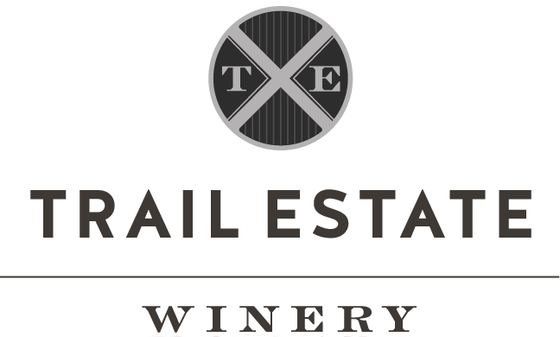By Mackenzie Bisbois
Grape Sampling and Gewürztraminer
Choosing to pick is one of the most critical decisions in winemaking. Picking decisions affect acidity and flavour, which influences how the wine will develop down the road. While it’s safe to say, much of the wine world focuses too much on promoting the “optimal” picking time — there honestly are many factors, not least of which is the availability of staff or picking crews, processing capacity or even available tank space!
That aside, and assuming everything is perfect (it never is) to decide when to harvest I look at the brix, the pH and the TA (titratable acidity). Using these numbers, along with taste, weather and logistics I determine what day will be the day for these grapes. A day before or a day later will mean an entirely different wine.
Gewürztraminer is a grape that can have a very high pH and a very low acid if left to ripen too long. Mix these parameters with skin contact and your pH can quickly sky rocket — leaving you with a very unstable wine. Unstable, meaning quite susceptible to a lot of spoilage possibilities along the wine’s life. When confronted with high pH a winemaker can choose to acidify using tartaric acid. This will lower the pH of the wine and make it more stable in the long run. I always struggle with this option because I know that when confronted with higher pH wines I can make them taste better if I acidify at the juice stage — but it is an additive, so is it right? The best course of action is to choose the right grapes for the right location that will give you perfection for the style of wine you are trying to make.
Historical Pick Dates
2017 — Oct 14 — Wertsch Vineyard —19.9 Brix
2018 — Sept 20 — Wertsch Vineyard —19.9 Brix
2019 — Oct 1 — Velo Vineyard (PEC) — 20.3 Brix
2020 — Sept 22 — Foxcroft Vineyard —20.3 Brix
2020 — Sept 21 — Foxcroft Vineyard —20.5 Brix
Back to grape development…The flavour development of Gewürztraminer can change from quite light and delicate to very heavy rose petals, apricots and honey. When the wine is aged on the skins it picks up a lot of aromatics and these can become quite over- the-top, especially if they are paired with low acidity.
When I make Skin Contact Gewürztraminer I attempt to pick grapes at a sugar level with some flavour development, but with a strong acidity and low enough pH level to keep the wine safe, allowing for very minimalist winemaking.
2018 Skin-Fermented Gewürztraminer
Fermented naturally on the skins of the grape for 14 days. The must was punched down twice a day for fermentation. This wine was pressed and put to neutral barrel for five months to age. The previous vintages of skin fermented Gewürztraminer were all filtered and sulphured, following along more conventional winemaking practices. In 2018 I discovered that if I kept the wines in neutral oak barrels they really stayed vibrant and actually increased the aromatics.
The 2018 is a beautiful golden colour and has stayed vibrant throughout its ageing. This wine boasts a nose of citronella and grapefruit with a rich palate that finishes with very dry tannin. The use of oak, no filtration and lower sulphur maintained a beautiful and balanced palate.
The 2018 is a beautiful golden colour and has stayed vibrant throughout its ageing. This wine boasts a nose of citronella and grapefruit with a rich palate that finishes with very dry tannin. The use of oak, no filtration and lower sulphur maintained a beautiful and balanced palate.
2019 Skin-Fermented Gewürztraminer
Hand harvested from a vineyard just south from us on Hwy 33 by Lake Ontario. This is the only Skin Contact Gewürztraminer that we have made from PEC fruit (mainly as very little Gewürz. is grown here). Destemmed and fermented naturally for 15 days on skins before being pressed and put to neutral barrels for one year to age. Racked out of barrel and bottled unfined and unfiltered with 20ppm sulfur added. Using the same techniques that worked in 2018, these grapes truly shine through. By far, my favourite vintage for this wine!
2021 Skin-Fermented Gewürztraminer
Hand harvested fruit was destemmed and pumped over at the start of fermentation to build up a yeast population. The fermentation vessel was changed in 2021. In previous years it was always vertical, cylindrical stainless steel tanks. In 2021, we changed to larger square stainless steel tanks — meaning, we got more cap to liquid ratio on the 2021. Punched down twice daily until the ferment neared dryness. Pressed after 14 days on skins and put to barrel to age. Aged for seven months in two neutral 500L barrels and one neutral 225L barrel.
2021 Skin-Fermented Gewürztraminer
Hand harvested fruit was destemmed and pumped over at the start of fermentation to build up a yeast population. The fermentation vessel was changed in 2021. In previous years it was always vertical, cylindrical stainless steel tanks. In 2021, we changed to larger square stainless steel tanks — meaning, we got more cap to liquid ratio on the 2021. Punched down twice daily until the ferment neared dryness. Pressed after 14 days on skins and put to barrel to age. Aged for seven months in two neutral 500L barrels and one neutral 225L barrel.
It is lighter in body, reflecting a cooler vintage.
